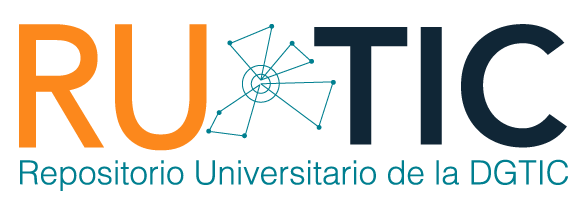| dc.contributor.editor | LIZBETH LUNA GONZÁLEZ | |
| dc.coverage.spatial | MX | |
| dc.date.accessioned | 2018-06-28T05:04:09Z | |
| dc.date.available | 2018-06-28T05:04:09Z | |
| dc.date.issued | 2013-06-01 | |
| dc.identifier.uri | https://ru.tic.unam.mx/handle/123456789/2140 | |
| dc.description | Innovación en TIC | |
| dc.description.abstract | Cuando los exploradores españoles entraron por primera vez a este territorio a inicios del siglo XVI, vieron una de las maravillas geográficas más grandes de su época. No solamente descubrieron los esplendores de la civilización Maya, sino también vieron la gran oportunidad de acceso a México y Centro América. Los españoles eran motivados por un espíritu de aventura, inspirados por sus creencias religiosas e ideales, ansiosos por encontrar riquezas y favores de la realeza al conquistar tierras sin fronteras. Gracias a la colonización española y la fusión de estas dos civilizaciones, los mayas perdieron significantes partes de su cultura, tales como su religión, escritura y gobierno. Sin embargo, no están completamente separados, algunos aspectos todavía se mantienen intactos de influencias extranjeras. | es_MX |
| dc.description.abstract | When Spanish explorers first entered these lands for the first time at the beginning of the 16th century, they saw one of the greatest geographic marvels of its time. Not only they discovered the splendors of the Maya civilization but they also saw the great opportunity to access Mexico and Central America. Spaniards were motivated by a spirit of adventure and inspired by their religious beliefs and ideals, anxious to find wealth and royal favors by conquering these lands without borders. Through Spanish colonization and the blending of these two cultures, the Maya civilization lost significant parts of their culture: religion, writing and government, however, they were not completely broken; some aspects of their cultures still remains untouched from foreign influences. | en |
| dc.format | html | |
| dc.format | application/pdf | |
| dc.format.extent | 4.0 MB | |
| dc.format.extent | 765 KB | |
| dc.language | spa | |
| dc.publisher | Universidad Nacional Autónoma de México. Dirección General de Cómputo y de Tecnologías de Información y Comunicación. Revista Digital Universitaria | |
| dc.relation.isformatof | http://www.revista.unam.mx/vol.14/num6/art12/art12.pdf | |
| dc.relation.ispartof | www.revista.unam.mx/index_jun13.html | |
| dc.rights | openAccess | |
| dc.source | Revista Digital Universitaria (1607 - 6079). Vol. 14, No. 6 (2013) | |
| dc.subject | Mayas | |
| dc.title | Los Mayas de Yucatán: La pérdida, intercambio y legado | es_MX |
| dc.title.alternative | The Maya of Yucatan: The loss, exchange and legacy | en |
| dc.type | article | en |
| dc.contributor.director | AGUSTIN LOPEZ MUNGUIA CANALES | |
| dc.subject.keywords | Conquistadores, Cultura, Religión, Escritura , Gobierno, Conquistadors, Culture, Religion, Writing, Government | |
| dc.identifier.url | http://www.revista.unam.mx/vol.14/num6/art12/ | |
| dc.creator | David Flores Guerrero | |
| dc.rights.url | http://creativecommons.org/licenses/by-nc-sa/4.0 |
Files in this item
This item appears in the following Collection(s)
COMPARTE
BÚSQUEDA
Escriba el texto a buscar en DSpace
CONTACTO
El Repositorio Universitario de la DGTIC se edita en la Dirección General de Cómputo y
de Tecnologías de Información y Comunicación (DGTIC), de la Universidad Nacional Autónoma de México (UNAM)
Circuito Exterior s/n, Ciudad Universitaria, Coyoacán, C.P. 04510, México, D.F
Tel: +(52) (55) 56228166 Email: rutic@unam.mx









 ¿Qué es un repositorio...?
¿Qué es un repositorio...? ¿Qué beneficios obtengo...?
¿Qué beneficios obtengo...? ¿Qué tipo de recursos...?
¿Qué tipo de recursos...? Preguntas frecuentes
Preguntas frecuentes